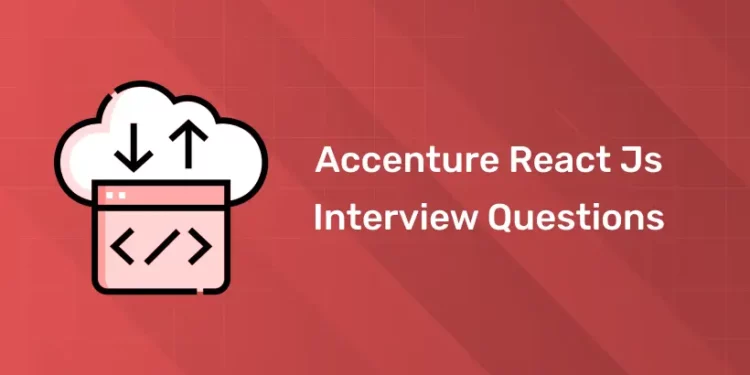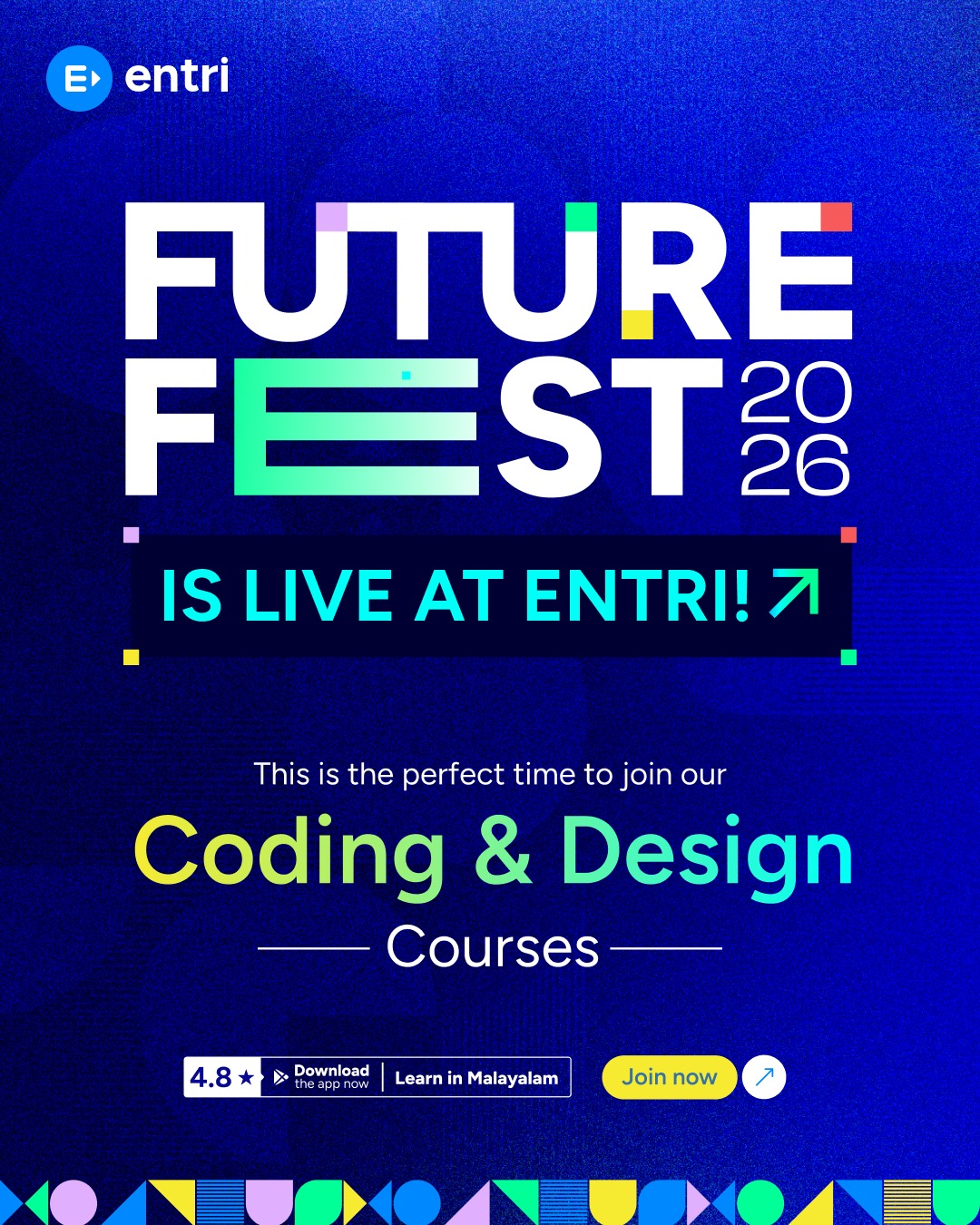Table of Contents
If you’re preparing for a React.js interview at Accenture, you’re aiming to showcase your skills in one of the most sought-after technologies for modern web development. As a global leader in technology consulting and digital transformation, Accenture looks for candidates who not only have a solid grasp of React.js fundamentals but also demonstrate an ability to work on complex projects that require deep understanding of state management, performance optimization, and component-driven architecture.
In this blog, we’ll cover the top React.js interview questions that Accenture typically asks. These questions will help you prepare for both technical assessments and interview discussions, focusing on key React.js concepts like hooks, context API, lifecycle methods, and integration with back-end systems.
Learn Full Stack Development with expert mentors! Get Free Demo Here!
Introduction
At Accenture, React.js plays a vital role in building dynamic, scalable, and modern web applications for various clients. As a leading global technology and consulting firm, Accenture leverages React.js for creating intuitive and highly interactive user interfaces across diverse industries such as banking, retail, healthcare, and more. React’s component-based architecture allows Accenture’s developers to craft reusable and efficient UI elements, ensuring streamlined development processes and quicker deployment of applications.
Accenture integrates React.js with advanced technologies like cloud platforms, APIs, and backend frameworks to develop comprehensive full-stack solutions. With the focus on agility and digital transformation, Accenture often uses React in its front-end development strategy to create single-page applications (SPAs) and dashboards that provide seamless user experiences. The company also emphasizes performance optimization, leveraging React’s virtual DOM and efficient state management practices.
Why Join in Accenture?
Joining Accenture as a React JS developer offers numerous advantages, including:
1. Innovative Projects: Accenture works with global clients across various industries, allowing you to work on cutting-edge technologies and complex web applications using React JS.
2. Career Growth: Accenture provides excellent opportunities for career development, including access to continuous learning, mentorship programs, and certifications that can help you grow as a developer.
3. Collaborative Environment: You’ll work in a diverse, collaborative environment where you can share knowledge with experienced professionals and improve your skills.
4. Global Exposure: Accenture’s global presence gives you the chance to work on international projects, expanding your experience with large-scale applications.
5. Technological Advancements: Accenture stays ahead of the curve in adopting new technologies, allowing you to work with the latest frameworks, tools, and methodologies in the React ecosystem.
6. Competitive Compensation: Accenture offers attractive salary packages, performance bonuses, and other benefits, providing financial stability and motivation.
7. Work-Life Balance: With a focus on employee well-being, Accenture offers flexible working hours, remote work options, and a positive work-life balance.
Accenture Interview Preparation Tips for React js
To prepare for a React.js interview at Accenture, focus on the following key areas:
1. Master the Fundamentals of React.js
- Understand JSX (JavaScript XML) and how it allows you to write HTML within JavaScript.
- Know how to manage state and props to handle dynamic data.
- Be familiar with components (functional and class components), and understand the differences and use cases for each.
- Understand the component lifecycle and hooks like
useState,useEffect,useContext, etc.
2. Advanced React.js Concepts
- Get hands-on with React Hooks: Know the basic hooks like
useEffect,useState, and advanced hooks likeuseMemo,useReducer, anduseCallback. - Understand React Context API for managing global state and when to use it over more complex state management libraries.
- Explore React Router for navigation in single-page applications.
- Be aware of React performance optimization techniques such as lazy loading, memoization, and virtual DOM.
3. State Management Tools
- Accenture may expect knowledge of popular state management libraries like Redux or MobX. Understand concepts like actions, reducers, and middleware in Redux.
- Learn how to use React Query or Apollo Client for handling asynchronous data in React applications.
4. JavaScript Proficiency
- React is built on JavaScript, so brush up on ES6+ features like arrow functions, destructuring,
async/await, promises, and modules. - Get familiar with concepts such as closures, hoisting, event bubbling, scope, and this keyword.
5. Testing in React
- Know how to use tools like Jest or React Testing Library for unit testing and integration testing.
- Learn the importance of end-to-end testing and tools like Cypress or Puppeteer.
6. Version Control and Collaboration
- Be comfortable with Git for version control and managing code repositories.
- Understand branching strategies like Gitflow for collaboration in larger projects.
7. React Ecosystem
- Familiarize yourself with the React ecosystem: Webpack, Babel, and ESLint.
- Learn about Next.js or Gatsby for server-side rendering and static site generation.
8. Projects and Problem Solving
- Build projects that demonstrate your understanding of React concepts.
- Practice React coding challenges that test your problem-solving abilities, such as creating components, managing state, handling side effects, and optimizing performance.
9. Soft Skills and Agile Methodology
- Accenture values teamwork and communication skills, so be prepared to demonstrate how you handle collaborative coding projects.
- Show familiarity with Agile methodologies like Scrum, as React developers often work in fast-paced, iterative development environments.
Learn Full Stack Development with expert mentors! Get Free Demo Here!
Top Accenture React js Interview Questions and Answers
1. What is React?
Answer: React is a JavaScript library for building user interfaces. It is maintained by Facebook and allows developers to create reusable UI components.
2. What are the key features of React?
Answer:
- Virtual DOM
- JSX (JavaScript XML)
- Components
- One-way data binding
- Declarative programming style
- React Hooks
3. What is JSX?
Answer: JSX stands for JavaScript XML, a syntax extension that allows mixing HTML with JavaScript, making the code easier to write and understand for UI components.
4. What is the Virtual DOM in React?
Answer: The Virtual DOM is a lightweight copy of the actual DOM. React uses it to optimize updates by only changing the real DOM when the Virtual DOM detects differences.
5. What is a component in React?
Answer: A component is a reusable block of code in React that manages its own content, logic, and appearance. Components can be class-based or functional.
6. What is the difference between a functional component and a class component?
Answer: Functional components are stateless, simpler, and can use React Hooks for state management. Class components are stateful and require more code, especially lifecycle methods.
7. What are React Hooks?
Answer: Hooks are functions that let you “hook into” React state and lifecycle features in functional components, without needing class components. Examples include useState and useEffect.
8. What is the purpose of the useState hook?
Answer: The useState hook allows you to add state to functional components in React.
9. What is the useEffect hook?
Answer: The useEffect hook performs side effects in functional components, such as data fetching, subscriptions, or manually changing the DOM.
10. What is the difference between props and state in React?
Answer: Props are read-only, passed from parent to child components, while state is managed within a component and can change over time.
11. What is the significance of keys in React lists?
Answer: Keys help React identify which items have changed, are added, or removed, optimizing list rendering. They should be unique and stable for each list item.
12. What are controlled components?
Answer: Controlled components are components where the form data is handled by the React component’s state, providing more control over form elements.
13. What are uncontrolled components?
Answer: Uncontrolled components rely on the DOM for form data management, using refs to access form values instead of React state.
14. What is a higher-order component (HOC)?
Answer: A higher-order component is a function that takes a component and returns a new component. It is used for code reuse, logic abstraction, and side effects management.
15. What is React Router?
Answer: React Router is a library for handling routing in React applications, allowing navigation between different components or views without refreshing the page.
16. What is the role of context API in React?
Answer: The Context API allows you to pass data through the component tree without passing props manually at every level, helping with global state management.
17. What is the difference between componentDidMount and useEffect?
Answer: componentDidMount is a lifecycle method used in class components, while useEffect is used in functional components to handle similar side effects like fetching data after rendering.
18. What are React fragments?
Answer: React Fragments let you group multiple elements without adding extra nodes to the DOM. They can be written as <React.Fragment> or simply <>.
19. What is lazy loading in React?
Answer: Lazy loading in React delays the loading of components until they are required, improving performance. It is often implemented using React.lazy() and Suspense.
20. What are React portals?
Answer: React portals allow rendering a component’s children into a DOM node that exists outside the DOM hierarchy of the parent component.
21. What is Redux?
Answer: Redux is a state management library for JavaScript applications, often used with React for managing global application state in a predictable manner.
22. What are the three principles of Redux?
Answer:
- Single source of truth (all state is in a single store)
- State is read-only (changes happen through actions)
- Changes are made with pure functions (reducers)
23. What are pure components in React?
Answer: Pure components are React components that perform a shallow comparison of props and state, only re-rendering if there is a change. They help in improving performance.
24. What is shouldComponentUpdate?
Answer: shouldComponentUpdate is a lifecycle method that allows you to prevent re-rendering of a component if certain conditions are met, optimizing performance.
25. What is the purpose of React.memo?
Answer: React.memo is a higher-order component that prevents unnecessary re-renders of functional components by memoizing the result unless the props change.
26. What are prop-types in React?
Answer: Prop-types are used for type-checking the props passed to a component, ensuring that the expected data types are provided, which helps in debugging.
27. What is React’s setState function?
Answer: setState is a method used in class components to update the component’s state and trigger a re-render with the new state values.
28. How does event handling work in React?
Answer: Event handling in React is similar to HTML, but with camelCase syntax (e.g., onClick instead of onclick). React also uses synthetic events for consistency across browsers.
29. What is server-side rendering (SSR) in React?
Answer: SSR is a technique where React components are rendered on the server and sent as HTML to the client, improving performance and SEO.
30. What is static site generation (SSG) in React?
Answer: SSG pre-renders pages at build time, generating static HTML files. It’s commonly used in frameworks like Next.js to improve performance.
31. What is the difference between SSR and CSR?
Answer: SSR renders pages on the server before sending them to the client, while CSR (Client-Side Rendering) renders pages in the browser using JavaScript after the initial load.
32. What are React error boundaries?
Answer: Error boundaries are React components that catch JavaScript errors anywhere in their child component tree, displaying fallback UI without crashing the whole application.
33. What is the useRef hook?
Answer: The useRef hook returns a mutable ref object that persists across re-renders. It can be used to access DOM elements or store mutable values.
34. What is the significance of React’s useMemo hook?
Answer: useMemo memoizes expensive calculations, recomputing them only when dependencies change, optimizing performance.
35. How can you improve the performance of a React application?
Answer:
- Use React.memo and pure components
- Avoid inline functions and objects
- Use code-splitting and lazy loading
- Optimize component re-rendering with keys and memoization
- Use SSR or SSG if needed
Learn Full Stack Development with expert mentors! Get Free Demo Here!
Advanced Accenture React JS Interview Questions
1: Which of the following is a JavaScript framework/library?
Here are some advanced React JS interview questions and their answers:
1. Explain the concept of React Context API and its use cases.
Answer: The React Context API allows you to share values (such as themes, authentication, etc.) between components without having to explicitly pass props through every level of the tree. It helps to avoid “prop drilling” (passing props down through many layers of components).
Example:
2. What is React’s Virtual DOM and how does it work?
Answer: The Virtual DOM (VDOM) is a lightweight representation of the real DOM. React maintains a VDOM to optimize rendering performance. When a component’s state or props change, React first updates the VDOM, then compares it with the previous VDOM using a diffing algorithm. Finally, it updates only the changed parts of the real DOM, minimizing costly direct DOM manipulations.
3. What is the difference between useEffect and useLayoutEffect hooks in React?
Answer:
useEffect: This hook runs asynchronously after the paint. It is used for side effects like fetching data, updating the DOM, or subscribing to external events.useLayoutEffect: This hook is synchronous and runs before the paint, ensuring that any DOM mutations are made before the browser repaints. It’s mostly used for tasks like synchronizing DOM measurements.
Example:
4. What are higher-order components (HOCs) in React?
Answer: A Higher-Order Component is a function that takes a component and returns a new component with additional props or behavior. HOCs are typically used for reusing logic across multiple components, such as adding authentication, data fetching, or theming.
Example:
5. What are React Hooks and how do they differ from class components?
Answer: React Hooks are functions that allow you to use state and other React features in functional components. They were introduced to make it easier to reuse stateful logic, replace class components, and simplify component structure.
Differences from class components:
- Class components require you to extend
React.Componentand define methods likerender(), while functional components are just JavaScript functions. - Hooks like
useState,useEffect,useContext, etc., provide more flexibility and less boilerplate compared to class-based state management and lifecycle methods.
6. What is the use of React.memo and how does it improve performance?
Answer: React.memo is a higher-order component that memoizes the rendered output of a component, preventing unnecessary re-renders when props haven’t changed. It improves performance, especially for functional components in lists or grids where renders are expensive.
Example:
7. Explain React’s error boundaries and how they work.
Answer: Error boundaries are React components that catch JavaScript errors anywhere in their child component tree, log those errors, and display a fallback UI instead of crashing the entire component tree. They are implemented using componentDidCatch and getDerivedStateFromError lifecycle methods.
Example:
8. What is code splitting in React, and how can you implement it?
Answer: Code splitting is a technique that allows you to split your application into smaller chunks, which are then loaded only when needed. This improves performance by reducing the initial load time. In React, you can implement code splitting using React.lazy and Suspense.
Example:
9. What are React Fragments and why would you use them?
Answer: React Fragments allow you to group a list of children without adding extra nodes to the DOM. This is useful when you need to return multiple elements from a component but don’t want to create an additional wrapper element.
Example:
10. What are the differences between useCallback, useMemo, and useRef?
Answer:
useCallback: Returns a memoized version of the callback function that only changes when one of the dependencies has changed. It’s used to optimize the performance of components that rely on reference equality.useMemo: Returns a memoized value that’s recalculated only when one of the dependencies changes. It’s used for expensive calculations that you don’t want to redo on every render.useRef: Returns a mutablerefobject which can hold a value across renders without causing a re-render when changed. It’s commonly used to directly access DOM elements.
11. What is the purpose of React’s useImperativeHandle hook?
Answer: useImperativeHandle is used to customize the instance value that is exposed to parent components when using ref. It allows functional components to expose methods or properties to the parent that would otherwise be inaccessible.
Example:
12. What are the performance optimizations in React for large applications?
Answer:
- Memoization: Use
React.memo,useMemo, anduseCallbackto avoid unnecessary re-renders. - Code Splitting: Implement lazy loading to load components on demand.
- Virtualization: Use libraries like
react-windoworreact-virtualizedto render only visible portions of a large list. - Throttling/Debouncing: Use these techniques to limit the number of function executions on events like scrolling or resizing.
- Avoid Inline Functions/Objects: Inline functions/objects are created on each render, which can lead to unnecessary re-renders.
13. Explain the differences between controlled and uncontrolled components in React.
Answer:
Controlled Components: These components rely on React state to manage form input values. Example:
Uncontrolled Components: These components rely on the DOM to manage the form input value. React does not control the state of the input.
Example:
Learn Full Stack Development with expert mentors! Get Free Demo Here!











